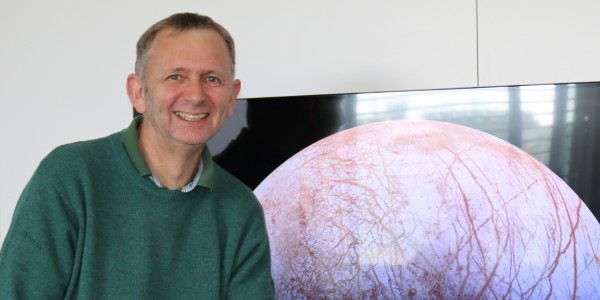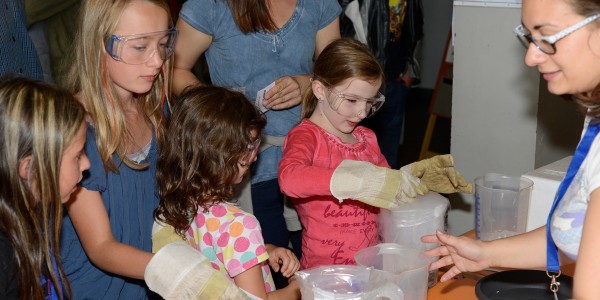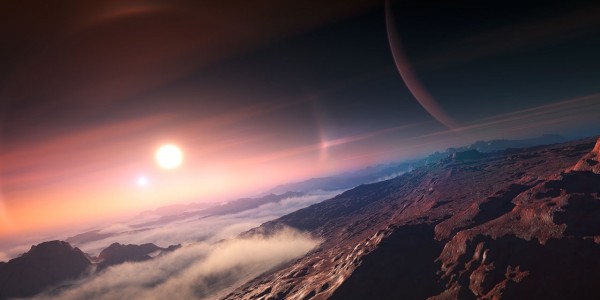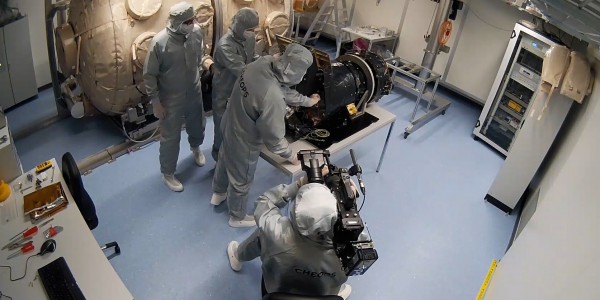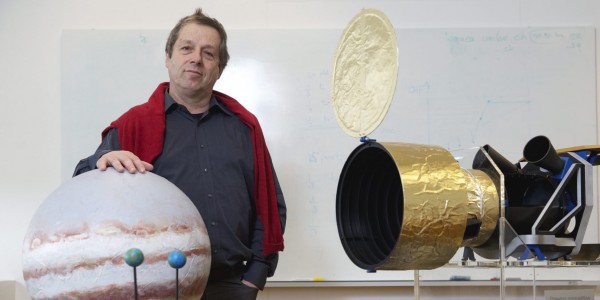Author Archive
Mysterious structures
A research team has observed structures racing out from the centre of a young star’s debris disk at high speeds. “It looks as if someone had smudged a freshly painted picture into a wavy line with their finger,” says ETH astrophysicist Christian Thalmann. “We were speechless when we saw the image for the first time […]
Continue ReadingTo the Jovian moon Europa in 2025
Our Solar System has hundreds of thousands of objects from planets down to small asteroids. And, of course, they all have a story to tell about their formation and evolution. However, only a few of these objects show remarkable phenomena that in turn can capture the imagination of both scientists AND the general public. Mars, […]
Continue ReadingNew members of PlanetS
„I am passionate about exoplanets“, says Helen Giles. „They’re thrilling.“ A research topic that also attracts Kevin Zihlmann, Miles Timpe and Hongping Deng. The four PhD students are new members of the NCCR PlanetS in Geneva, Bern and Zürich. „I want to find out more about the formation of our planet Earth“, says Kevin Zihlmann. „But […]
Continue ReadingOpen hunt for habitable planets
Bacterium, virus, fungus: Which one of these three things is not considered to be a living organism? The quiz question was quite a challenge for some parents who tried to help their children to win one of the nice space toys, meteorites and other prizes at the event “Jagd nach lebensfreundlichen Planeten” that took place […]
Continue ReadingEpicurus, Hypatia and Nicynon
You can now vote in an IAU worldwide contest to name exoplanets. Since the first entry on 12 August more than 250’000 votes have been registered. Deadline is 31 October 2015. „Epicurus“ should be the new name of 51 Pegasi b according to the “Société Astronomique de Genève”. “It was proposed by Michel Mayor, honorary […]
Continue ReadingTesting CHEOPS on Swiss TV
In August and September, TV crews were filming at the University of Bern, at the Stellarium Gornergrat and in the Musée d’Histoire Naturelle de Genève to report about space and planetary research in Switzerland. „Schweiz aktuell“, SRF1, 21. – 25.9.2015, 19:00 http://www.srf.ch/sendungen/schweiz-aktuell „Einstein“, SRF1, 24.9.2015, 21:00 http://www.srf.ch/sendungen/einstein/sendungen Have a look at the making of the […]
Continue Reading“Too much water is bad for life”
Planets with a deep, global ocean should be very common. But their habitable zone is much narrower compared to Earth-like planets as Daniel Kitzmann, member of NCCR PlanetS, and his colleagues found in a study published in the Monthly Notices of the Royal Astronomical Society. PlanetS: In the movie „Interstellar” Matthew McConaughey and Anne Hathaway […]
Continue ReadingNCCR PlanetS
Dear Reader, Almost 2000 exoplanets have been found since our colleagues Michel Mayor and Didier Queloz discovered the first one orbiting a solar-type star exactly twenty years ago. Such an incredible explosion in number is due for one part to the development of instruments with increasing performances and for another part to the fact that […]
Continue Reading“James Webb is a challenging mission”
Observing exoplanet transits will be one of the big science areas of the James Webb Space Telescope (JWST), says Mark Clampin, Observatory Project Scientist of the JWST at NASA’s Goddard Space Fight Center. He was one of the speakers at a conference in July in Bern where 185 participants from all over the world discussed […]
Continue ReadingSPHERE – the planets’ photographer
Only a few exoplanets have been photographed directly, the others were found in indirect methods. In order to detect and characterize exoplanets by imaging, a consortium in which members of PlanetS are involved, designed SPHERE (Spectro Polarimetric High contrast Exoplanet REsearch), an instrument capable of photographing a planet up to a million times fainter than […]
Continue Reading

